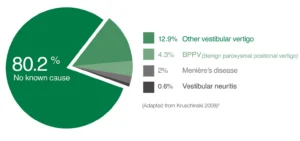From ages 6-10, my uncle took my cousin and I to Navy Pier every summer. It’s July, school is out, the sun is shining, and not one multiplication table in sight! Fatty fair foods to our left and Lake Michigan to our right, the only thing missing was the adventure! Navy Pier doesn’t have many rides but there are a few that I was definitely excited for as a child. The only problem is, I can’t ride rollercoasters. And no, I am not afraid of heights. I still tried though it made my stomach hurt, but it got too much at one point and I stopped riding rollercoasters that day, and for the rest of my life.
This would not be a problem if it wasn’t affecting my daily life. In addition to not being able to enjoy 98% of the rides at Disney World, I have severe motion sickness. Motion sickness is a common condition so, I was not surprised that I have it.
But my motion sickness doesn’t only affect me as a passenger. When I drive over large bumps or up steep hills, I flinch because of the stomach pain. Not only is this dangerous, but an Atlanta speed bump is nothing compared to a rollercoaster(at least it’s not supposed to be)!
So why can’t I ride rollercoasters? Why do I need to brace for impact driving up to my parents’ house? My mom gave me my first answer because she has a similar issue: Vertigo. Vertigo, though described as the sensation of spinning that leads to dizziness, is actually a symptom of several diseases/conditions such as: chronic migraines, benign paroxysmal positional vertigo(BPPV), persistent postural-perceptual dizziness(PPPD), or Meinere’s disease. It’s also described as “disequilibrium”, which is just the feeling of being unbalanced constantly.

Here’s the science:
The stomach drop that many people feel when riding coasters is because your internal organs lag behind when you fall(Berg, 2024). This slight disconnect makes you feel like you’re weightless! Your internal organs don’t move as fast as the rest of your body so that sends a signal to your brain fooling you into thinking gravity no longer exists.
For people with Vertigo, this feeling is exhilarating. For me, it causes extreme nausea and pain. My stomach churns and my head starts aching, and then after 30 seconds it’s over. It turns out Vertigo is an inner ear problem. The inner ear is located in the vestibular system, which is a maze of canals filled with fluids and tiny crystals called otoconia.
According to University of California San Francisco, otoconia are “composed of calcium carbonate, and help the utricle sense head tilt and acceleration by acting as a weight that will slide relative to the hair cells with head position changes”. They can be easily displaced by external factors such as age or trauma, but it can also be a genetic mutation.
When the otoconia ends up in the wrong palace such as the semicircular canals, your brain thinks that there is movement of fluid throughout the inner ear when there really is not. This miscommunication of signals is what causes serious nausea, dizziness and even severe pain. Essentially, your inner ear tells your brain that you’re moving at a rapid pace but your eyes are also telling your brain that you’re not moving at all. Because the brain is receiving different signals, the rest of the body suffers the consequences.
For me, it depends on the activity. Yes, I can ride the kiddie rides at Six flags. No, I cannot ride “Goliath”. I am not afraid of heights or planes. But when a plane lands, I often brace myself because the speed at which we land does cause a lot of pain. I also do not get sea sick, which is interesting because many people with motion sickness also have sea sickness.
Solutions:
- Motion sickness glasses.
- Though they may look funny, many people have said these glasses help with car rides. The liquid inside the glasses helps balance the signal your inner ear and your eyes are sending to the brain.
- Antihistamines
- Antihistamines can often be used to suppress the vestibular system’s hyperactivity when moving.
- Medicine such as Mezclizine, commonly known as Dramamine is the most popular form of medicine to help reduce motion sickness. Cinnarizine is also an antihistamine that is used for travel sickness.
- Antihistamines can often be used to suppress the vestibular system’s hyperactivity when moving.
- Surgery
- For people with Meniere’s disease, surgery may be required to correct the inner ear’s dysfunction.
- Sit in the passenger seat!
- Because the front wheels of responsible for the direction of the car, turns may feel less harsh. If you sit in the back, you’re farther away from the turning wheels so motion sickness is more likely. Drivers are even less likely to feel motion sickness.
My solutions:
- I take iron supplements to help with dizziness/anemia, so that motion sickness doesn’t make me pass out.
- I don’t ride rollercoasters.
References
https://www.ama-assn.org/public-health/prevention-wellness/what-doctors-wish-patients-knew-about-vertigohttps://ohns.ucsf.edu/balance-falls/BPPV
https://www.nhsinform.scot/illnesses-and-conditions/ears-nose-and-throat/vertigo/https://
www.rd.com/article/motion-sickness-glasses/
https://www.meandve.org.uk/information-and-support/treatment-and-management/surgery
https://www.canva.com/design/DAG3Yocer34/Lielrs9QrT29fb-6T_CN2Q/edit?utm_content=DAG3Yocer34&utm_campaign=designshare&utm_medium=link2&utm_source=sharebutton
https://www.google.com/url?sa=i&url=https%3A%2F%2Fwww.heel.com%2Ftherapeutic-areas%2Fvertigo%2Fvertigo&psig=AOvVaw3VWlit1xLmX4e-YTrBrPfh&ust=1762563486136000&source=images&cd=vfe&opi=89978449&ved=0CBYQjRxqFwoTCLCOsOTq3pADFQAAAAAdAAAAABAE
https://www.warrantywise.co.uk/blog/advice/travel-advice/10-ways-to-deal-with-car-sickness/#:~:text=Sit%20in%20the%20front%20seat,further%20from%20the%20turning%20wheels.



